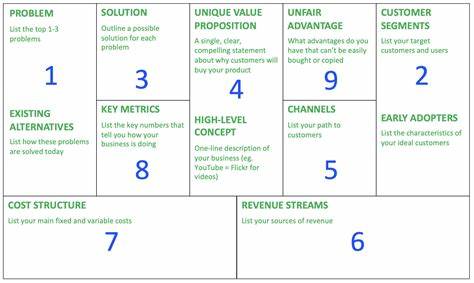Written by Craig
February 10, 2023

When launching a new product or service, it’s important to understand the different types of customers you will encounter. Two key categories of customers are early adopters and mainstream customers, and it’s essential to understand the differences between them.
Early adopters are the first customers to purchase and use a new product or service. They are typically more willing to take risks and try new things, and they are often seen as trendsetters within their social and professional networks. Early adopters are typically more forgiving of flaws in a product or service and are more likely to provide valuable feedback that can help you improve and refine your offering.
Mainstream customers, on the other hand, are those who adopt a new product or service once it has been proven and has achieved broader acceptance. They are typically more risk-averse and are more likely to be influenced by the opinions of others. Mainstream customers are typically more demanding of a high-quality product or service and are less likely to tolerate flaws or inefficiencies.
Early adopters are more likely to provide valuable feedback that can help you improve and refine your offering
When launching a new product or service, it’s important to understand the different types of customers you will encounter. Two key categories of customers are early adopters and mainstream customers, and it’s essential to understand the differences between them. In this article, we will explore the characteristics of each group and what they mean for your product or service.
Early adopters are the first customers to purchase and use a new product or service. They are typically more willing to take risks and try new things, and they are often seen as trendsetters within their social and professional networks. Early adopters are typically more forgiving of flaws in a product or service and are more likely to provide valuable feedback that can help you improve and refine your offering.
Mainstream customers, on the other hand, are those who adopt a new product or service once it has been proven and has achieved broader acceptance. They are typically more risk-averse and are more likely to be influenced by the opinions of others. Mainstream customers are typically more demanding of a high-quality product or service and are less likely to tolerate flaws or inefficiencies.
The difference between early adopters and mainstream customers is crucial to understand when launching a new product or service. Early adopters can provide valuable insights and feedback that can help you improve your offering, but they are also more forgiving of flaws and inefficiencies. Mainstream customers, on the other hand, are more demanding of a high-quality product or service and are less likely to tolerate flaws or inefficiencies.
In order to effectively target and market to both early adopters and mainstream customers, it’s important to understand the different needs and motivations of each group. For early adopters, it’s important to focus on the unique value proposition of your product or service and how it solves a problem or meets a need in a new and innovative way. For mainstream customers, it’s important to highlight the proven value and quality of your offering and how it meets their specific needs and requirements.
By understanding the unique needs and motivations of each group, you can effectively target and market to them, improving your chances of success.
In order to target and engage early adopters, it’s important to understand where they can be found. There are several places where early adopters tend to congregate, including:
Online communities and forums:
Many early adopters are active participants in online communities and forums related to technology, entrepreneurship, and innovation. By participating in these communities and forums, you can connect with early adopters and engage with them directly.
Networking events:
Networking events are another great place to connect with early adopters. By attending these events and connecting with others in your industry, you can build relationships with early adopters and learn more about their needs and motivations.
Conferences and trade shows:
Conferences and trade shows are great places to connect with early adopters and other members of your target audience. By attending these events and participating in discussions and workshops, you can learn more about the needs and motivations of early adopters and how your product or service can meet their needs.
Social media:
Social media is a powerful tool for connecting with early adopters. By engaging with users on platforms such as Twitter, LinkedIn, and Facebook, you can connect with early adopters, build relationships, and share information about your product or service.
Related Articles

Problems vs. Solutions. What to focus on?
Problems, not solutions, create spaces for innovation. ~Ash Maurya Identifying problems is a key aspect of successful innovation. As startup founders, it's important to understand that the real opportunity for innovation lies not in the solutions, but in the problems...

Don’t write a traditional business plan
A business model describes how you create, deliver, and capture value (get paid) from customers. ~Saul Kaplan Deconstructing an idea for a product or business is a crucial step in the development process. By breaking down the concept into its core components, you can...

Don’t write a traditional business plan
A business model describes how you create, deliver, and capture value (get paid) from customers. ~Saul Kaplan Deconstructing an idea for a product or business is a crucial step in the development process. By breaking down the concept into its core components, you can...
Stay Up to Date With The Latest News & Updates
Access Premium Content
Join Our Newsletter
Follow Us

0 Comments